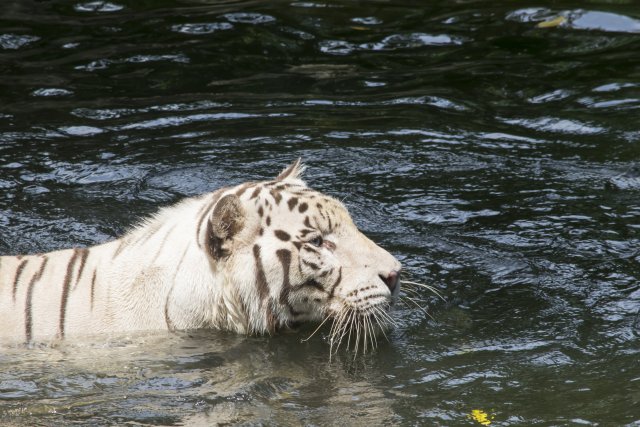From Paddling to Power: Evolution of Tigers’ Swimming Skills
Tigers’ Swimming Skills
Tigers, the majestic big cats, are known for their strength, agility, and hunting prowess. While they are primarily terrestrial animals, they also possess impressive swimming skills. The evolution of tigers’ swimming abilities has been a fascinating journey, shaped by their environment and survival needs. In this article, we will explore the development of tigers’ swimming skills, the factors that influenced their aquatic adaptation, and the remarkable examples of their swimming prowess.
The Origins of Tigers’ Swimming Abilities
Tigers belong to the Panthera genus, which also includes lions, leopards, and jaguars. These big cats share a common ancestor and have similar physical characteristics. However, tigers have distinct adaptations that enable them to swim efficiently.
It is believed that tigers’ swimming abilities evolved as a response to their habitat. Tigers inhabit a wide range of environments, including dense forests, grasslands, and mangrove swamps. The presence of water bodies such as rivers, lakes, and marshes in these habitats necessitated the development of swimming skills for survival.
Adaptations for Aquatic Locomotion
Tigers possess several physical adaptations that enhance their swimming abilities:
- Webbed Paws: Tigers have partially webbed paws, which act as paddles in the water. The webbing increases surface area, providing better propulsion and maneuverability.
- Muscular Build: Tigers have a muscular build, with strong forelimbs and shoulders. This muscularity aids in powerful strokes and helps them navigate through water effortlessly.
- Streamlined Body: Tigers have a streamlined body shape, with a long tail that acts as a rudder. This design reduces drag and allows them to swim swiftly.
Factors Influencing Tigers’ Aquatic Adaptation
Several factors have influenced the evolution of tigers’ swimming skills:
Geographical Distribution
Tigers are found in diverse habitats across Asia, including the Russian Far East, India, and Southeast Asia. The presence of water bodies in these regions has played a significant role in shaping their swimming abilities. For example, the Bengal tiger, native to the Indian subcontinent, has adapted to the region’s numerous rivers and mangrove swamps.
Hunting and Prey Availability
Tigers are skilled hunters and rely on a variety of prey for sustenance. Their swimming abilities allow them to access new hunting grounds and prey species that inhabit aquatic environments. For instance, tigers in the Sundarbans mangrove forest in Bangladesh and India are known to swim in search of fish, crabs, and other aquatic animals.
Climate and Environmental Pressures
The climate and environmental conditions in which tigers live have also influenced their swimming skills. Tigers in regions with heavy rainfall and monsoons, such as the Sundarbans, have adapted to navigate through flooded areas and swim across swollen rivers.
Remarkable Examples of Tigers’ Swimming Prowess
Tigers have demonstrated their exceptional swimming abilities in various instances:
The Sundarbans Tigers
The tigers of the Sundarbans mangrove forest are renowned for their swimming prowess. They are known to swim long distances, sometimes up to 6 miles (10 kilometers), in search of prey. These tigers have adapted to the unique challenges of their environment, where they encounter tidal rivers, dense vegetation, and shifting sandbars.
The Russian Tigers
In the Russian Far East, Amur tigers have been observed swimming across wide rivers, including the Amur River, which can be up to 1.2 miles (2 kilometers) wide. These tigers have adapted to the harsh winters of the region, where they encounter frozen rivers and lakes. Swimming allows them to access new territories and maintain their population.
Summary
Tigers’ swimming skills have evolved as a response to their environment and survival needs. Their physical adaptations, such as webbed paws, muscular build, and streamlined body shape, enable them to swim efficiently. Factors such as geographical distribution, hunting requirements, and climate have influenced the development of their aquatic adaptation. Remarkable examples of tigers’ swimming prowess can be seen in the Sundarbans mangrove forest and the Russian Far East. Understanding the evolution of tigers’ swimming skills provides valuable insights into their adaptability and resilience as a species.
Get Up Close and Personal with Exotic Animals at Turpentine Creek Wildlife Refuge in Eureka Springs





